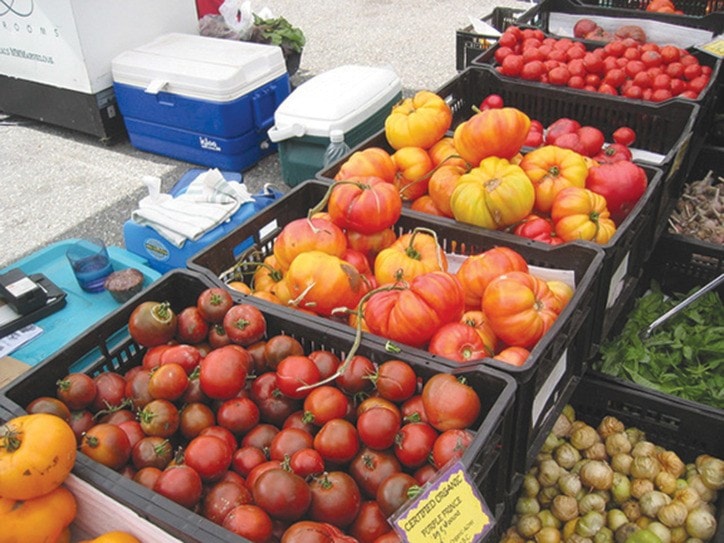Trying to eat well on a small budget is hard, and the specific complexities of food security and accessibility in the North Island make nutrition for those in this region with limited income a challenge.
A single person living on income assistance in B.C. receives about a base rate of $610 per month, and combined with other benefits they could receive about $638.92 per month. For a person living in Port Hardy, as in most other towns and cities in Canada, it would be incredibly difficult to consume a nutritious, balanced and satisfying diet on this income.
According to the B.C. Cost of Living Calculator, which is based on data collected by the Economic Research Institute, if someone on income assistance lived in Port Hardy in accordance with average living expenses, in a small apartment and with no car, they would end up $825 dollars in debt each month.
Statistics Canada reports that in 2013 there were 310 people in Port Hardy using some form of social assistance (not necessarily income assistance.) This is about 7.8 per cent per cent of the total population based on the most recent available census data.
Living in a small Port Hardy apartment at current prices could cost $450. A local bus pack of 10 tickets is $10.50. If $55 were allocated for other essentials like buying shampoo, toothpaste, or a cell phone plan to aid looking for employment, then $123.42 would be left over each month for groceries, or just under $31 per week.
Bronwyn Coyne, a dietitian with the Vancouver Island Health Authority who works in the North Island, says that people trying to eat healthily on such a small budget face major obstacles. Coyne says that a challenge is that despite the clear nutritional benefits of fruits and vegetables, on a budget of this size buying a lot of produce is not always economical. Fruits and vegetables won’t fill someone up as much as things like oatmeal, rice and beans, ideally purchased in bulk. She recommends buying frozen vegetable, as well as proteins like eggs and beans instead of spending a lot of money on meat. She also says that even if someone is focusing on buying very healthy, nutritious food, the biggest problem is having enough of that food to last throughout the week or month.
There are resources in the area for those facing food insecurity, like the Harvest Food Bank, Salvation Army and Gwa’sala-Nakwaxda’xw food programs, but for the purposes of this article budgeting is based solely on income assistance.
The author of this article created a meal plan for the week using July 2 prices at Overwaitea in Port Hardy. With the inclusion of some sale prices, a week of eating on $31 could include:
Breakfast
Oatmeal with 1 apple sliced in and peanut butter
Lunch
1 peanut butter sandwich
1 apple
Dinner
For three dinners out of the week: linguine with sautéed broccoli and garlic in tomato sauce
For four dinners out of the week: baked beans with a 3-egg omelette with broccoli
This diet is low in variety and portion size and it is important to note that the budget does not allow for the odd coffee or treat, often a significant morale booster.
This week of eating also assumes that someone would have access to a kitchen, cooking staples like oil, butter, basic spices and plastic containers and sealable plastic bags for having lunch or snacks throughout the day - all extra costs that would exceed the $31 budget.
Another issue is that Port Hardy only has one grocery store, negating the ability for people to comparison shop.
Even though there are two grocery stores in nearby Port McNeill, the half-hour drive can be an impediment for many people facing personal food shortages, especially if they do not own a vehicle.
Health Canada’s National Nutritious Food Basket is a tool used to monitor the cost of healthy eating based on about 60 foods that represent a healthy general diet. The cost of a nutritious food basket is based on feeding a family of four, but can be used as a general tool to see how expensive healthy food is in different parts of the province. There are five geographical health authority regions in B.C. - Northern Health, Interior Health, Fraser Health, Vancouver Island Health and Vancouver Coastal Health. In 2013 the average cost of the nutritious food basket in B.C. as a whole was $914, and of the five geographic regions, Vancouver Island Health had the most expensive nutritious food basket at $948. While food prices obviously vary from community to community on Vancouver Island, the fact that the North Island is remote and without extensive agriculture means that communities here are likely paying more than neighbours to the south of the island.
There is also the added effect that poor nutrition has on mental health and energy. Raise the Rates, a coalition of community groups concerned about poverty and homelessness in B.C., organizes the Welfare Food Challenge, an annual challenge that asks people to spend no more than $21 on food for one week. The $21 is based on the cost of living in a single-room occupancy dwelling in the downtown eastside of Vancouver.
Many participants in the challenge - often working professionals and parents - consistently record in their journals feeling lethargic, depressed and unsatisfied. Someone who is dealing with the stress of being low on money would likely not be aided in their day-to-day challenges by feeling terrible from insufficient nutrition.
The above information just scratches the surface of the difficulties those trying to subsist on income assistance or limited incomes face, a significant issue in our community.
This is the second article in a series about food insecurity issues on the North Island. If you have any ideas of other areas to explore or would just like to discuss the issue, please contact Hannah Griffin at reporter@northislandgazette.com or 250-949-6225.
